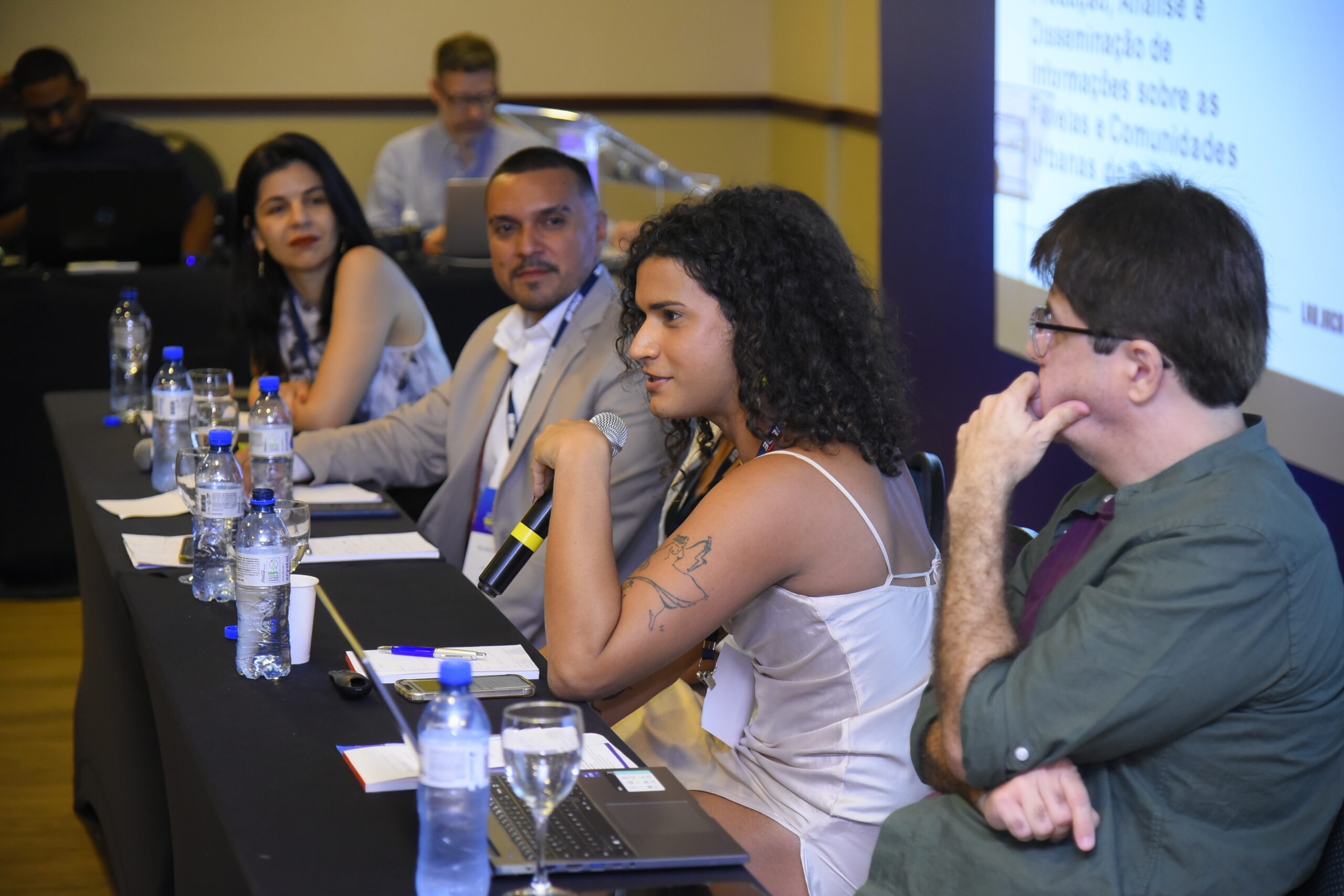
This is the final article in a series of three about how Brazil’s census bureau, IBGE, held an unprecedented week-long workshop to debate how to change the term “subnormal agglomeration” used for decades to describe the nation’s informal settlements, from the perspective of favelas and working-class communities.
From September 25-28, 2023, leaders from favelas, urban communities, tidal lands, flood lands, mangroves, stilt communities, villages, valleys, hillsides, self-constructed settlements, working-class settlements, invasions, grottos, neighborhoods, occupations, hoods, glens, lowlands, Afro-Brazilian mocambos and ressacas, formal and informal subdivisions, and improvised villages (as they all self-identified), together with employees and researchers from the Brazilian Institute of Geography and Statistics (IBGE), met online and in Brasília for the First National Meeting for the Production, Analysis and Dissemination of Information about Favelas and Urban Communities in Brazil. With approximately 80 daily attendees, the event was also viewed online by hundreds of interested parties.
Production of Information on Favelas and Brazilian Urban Communities Beyond Official Bodies
The panel opening the third day focused on community-led experiences in data and statistical production. The intention was to discuss what the statistical production conducted by official organizations such as IBGE means for favelas and urban communities, and what their methods leave out, to be covered only through grassroots research.
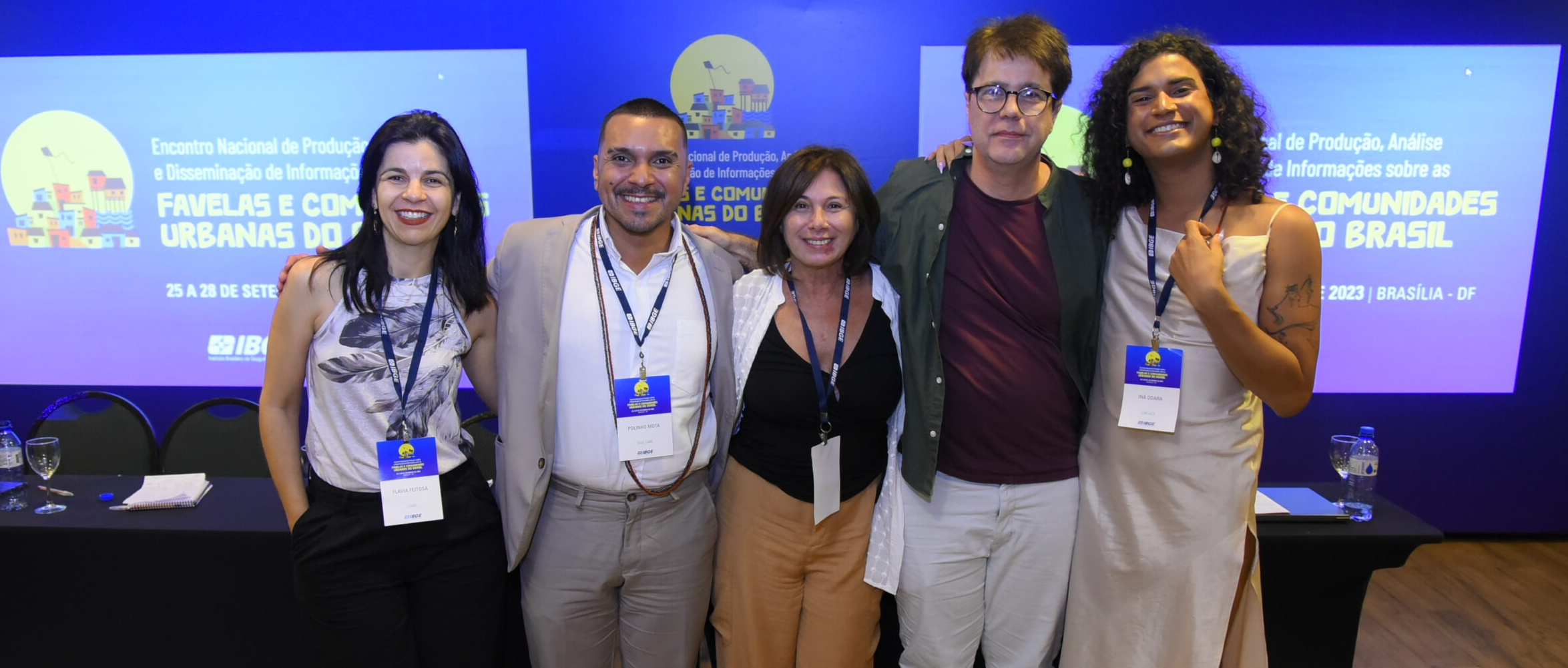
Dalcio Marinho Gonçalves, researcher at the NGO Redes da Maré and Uniperiferias, shared a history of Redes da Maré’s experience with community-led statistical research, made possible through partnerships between civil society organizations and public agencies.
- 2010 – Maré Census: Initiated in 2010 by Redes da Maré and the Favelas Observatory, the census was conducted by residents in the favelas of Maré in Rio de Janeiro: 93 as field researchers; 53 in coordination, supervision, review, or analysis; and 12 in digitization. The first action involved reviewing available cartographic information. For this, a partnership was established with City Hall’s urban planning research entity, the Pereira Passos Institute (IPP), which provided the up-to-date cartographic base, and with Maré’s 16 residents’ associations;
- 2012 – Guide to the Streets of Maré: Derived from this cartographic review, Redes da Maré introduced the Guide to the Streets of Maré as the second product of its statistical project in partnership with the Favelas Observatory and IPP. The main objective was to produce knowledge about the area, dispelling stereotypes surrounding the favela complex. The Guide was instrumental in demanding, for example, that Maré’s streets be granted a Postal Address Code (CEP), which many favelas do not have. The project was so successful that, in 2014, the 2nd Edition of the Guide to the Streets of Maré was launched;
- 2014 – Census of Economic Enterprises: Built off the initial census, this third stage focused on mapping and gathering knowledge on commercial enterprises, which will be paramount for the development and realization of economic development policies. This marked the first comprehensive mapping of businesses in the region, specifically aimed at guiding future development for an enhanced quality of life for residents;
- 2019 – Maré Population Census: Redes da Maré’s latest census research initiative, in collaboration with the Favelas Observatory and residents’ associations, will analyze Maré in its full demographic, social, and economic diversity. This is the largest study undertaken by these institutions, and includes the participation of local residents at every stage of the process.
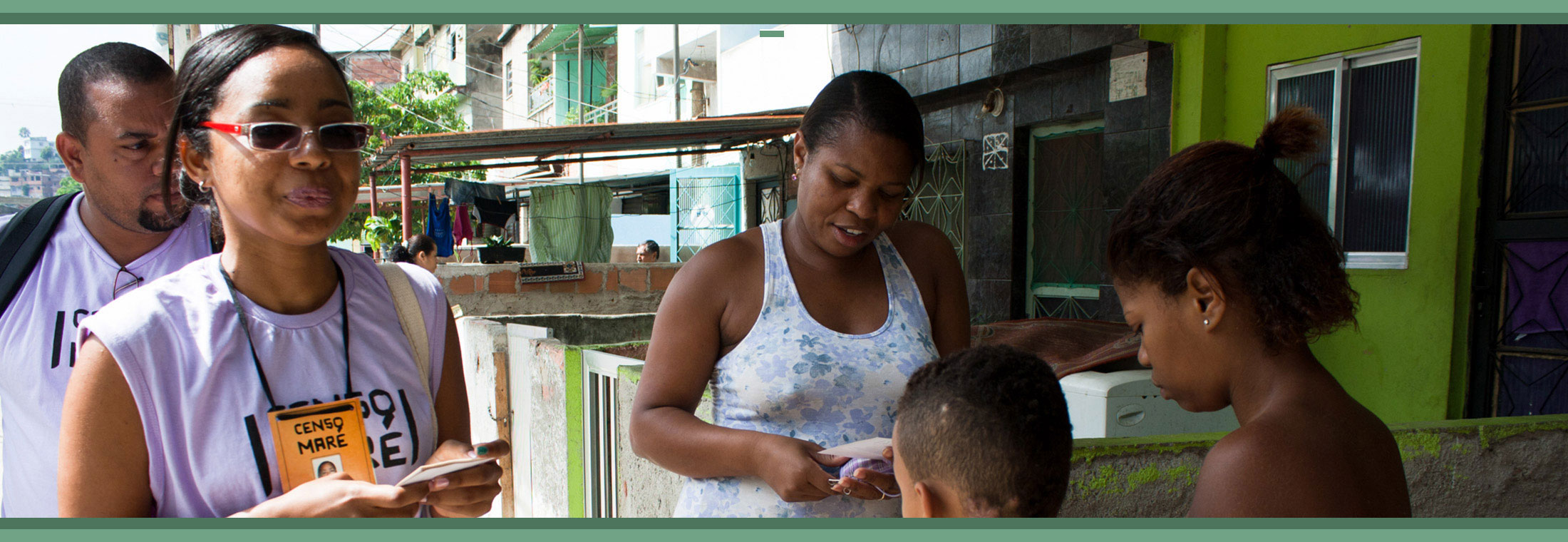
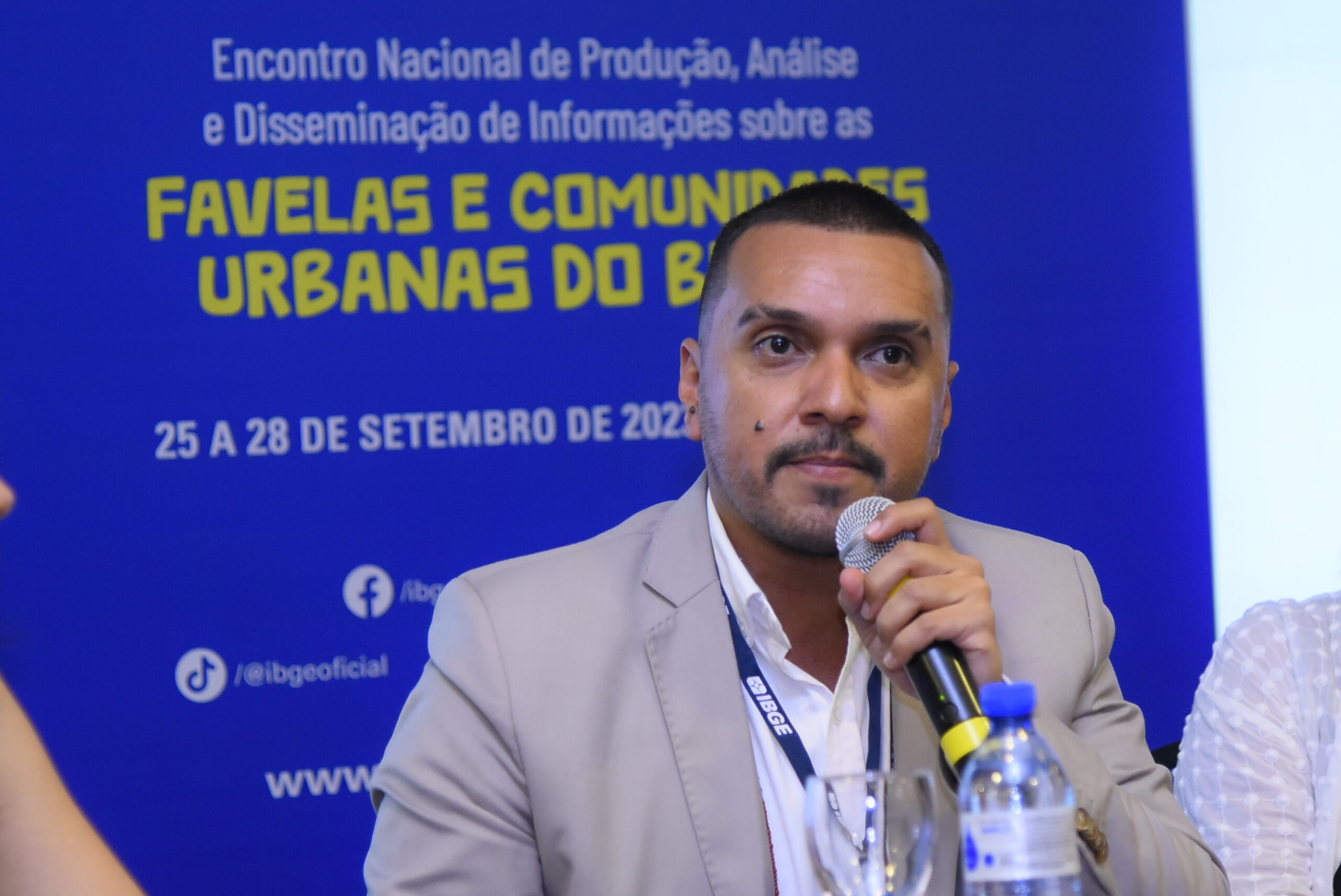
After Gonçalves’ presentation, Polinho Mota, data coordinator at data_labe, another organization based in Maré, and Iná Odara Cholodoski Monteiro Torres from LabJaca in Jacarezinho, discussed the importance of transparency and resident input in shaping concepts, indicators, and parameters of analysis for relevant research. Mota emphasized that while IBGE may not directly incorporate data from initiatives like CocôZap and LabJaca, their data should certainly influence the formulation of policies by public agencies.
“There used to be a barrier, but today we are starting to break through it by being here… Universalizing processes has caused a growing distance from people and a disconnect from the reality in which people live. Symbolic aspects matter, and the only people who understand this symbology are those who live it.” — Polinho Mota
Operational Challenges of Mapping, Collection, and Supervision in Favelas and Urban Communities
The fifth panel of the multi-day event, discussing the challenges of census collection in favelas and similar territories, was mediated by Jaison Cervi, head of the Social Territories Sector at IBGE. He began by stating that since the first census researching favelas in the 1950s, IBGE has been trying to improve its statistical performance, methodologies, and approaches.
“Specific training was necessary for favelas and communities. General training doesn’t capture their particularities.” — Jailson Cervi
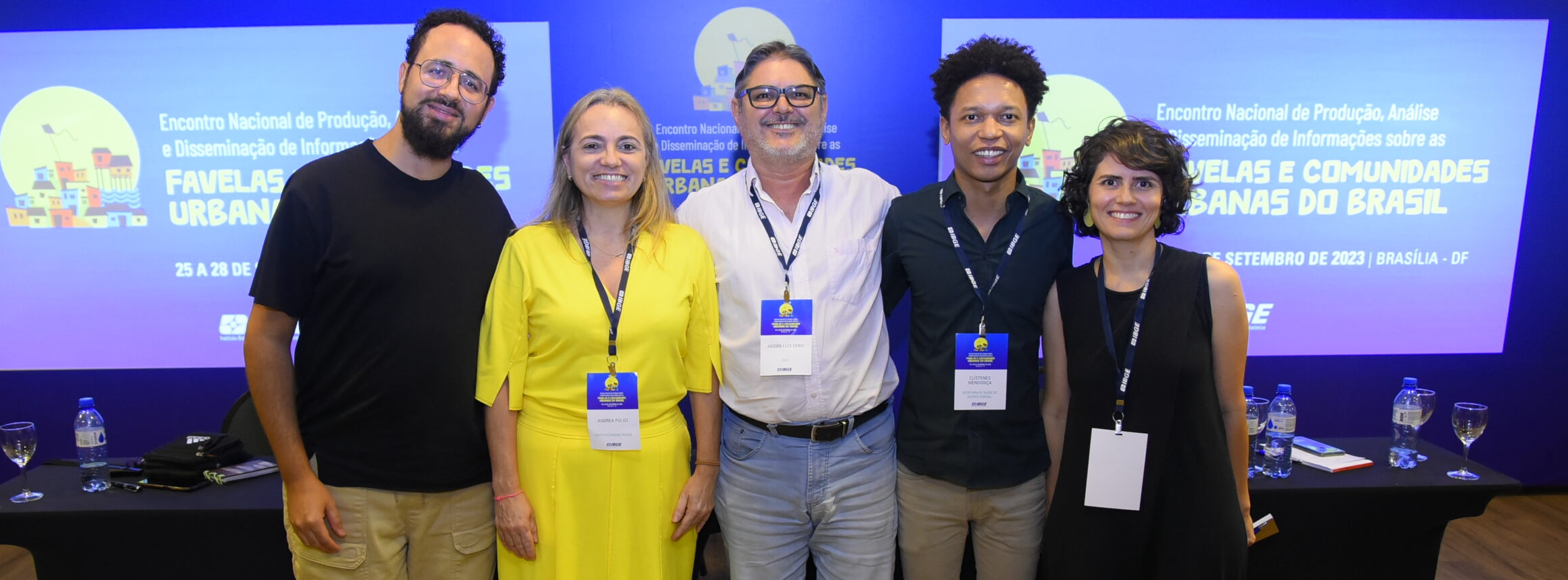
Andréa Pulici, from IPP, also addressing the challenges of census collection in favelas, asks: “different cultures, different norms, how can we succeed in maintaining the same [data] collection methodology?” To her, it is necessary to adapt the methodology and approach to each territory, sometimes involving local field researchers working in their specific areas.
“There is a need to train… workers within communities, to train interviewers, and generate income within the community. There are always studies happening in communities… In many cases, community youth have specific routes from home to school, etc., and do not know the whole territory. So, first, they had to identify homes with young residents, and then train the youth with a sense of belonging and knowledge of the territory… Initially, they had difficulty using the tablet, but they adapted well as the process unfolded.” — Andréa Pulici
Another issue raised by Pulici is the population density in some territories, such as Rocinha, in Rio de Janeiro, which makes it difficult to ensure that all homes are counted. According to her, the only way to address this challenge is through community participation in carrying out the census, not only in responding, but at all stages of the process. She also notes that “each resident responds as they want to interpret their reality,” since the “architectural freedom” of favelas often makes it difficult for non-locals to individualize houses and list addresses.
Vanessa Freitas, a program analyst at UN Habitat Brazil, says that the UN adopts the terms used by residents, leaders, and partners to name the territories in which they live or work. She goes further describing that the UN works interactively with leaders and residents of favelas. According to her, this is a prerequisite for obtaining representative data that reflect the plurality of favelas and similar urban communities. Mapping communities with these microdata in hand grants greater legitimacy to the fight for public policies, including urban mobility, sustainability, social inclusion, etc.
Next, Wellington Fernandes, creator of Quebrada Maps and popular educator, remarks that, in the favela struggle, “growth [must be] collective, since we do nothing alone, especially where we come from.” Clístenes Mendonça, of the Federal District Secretary of Health, agrees, citing the strategic mapping carried out by health agents in Brasília in areas analogous to favelas: “Community agents are always from the territory. This came about as a way of facilitating dialogue between health organizations and the population.”
Use, Appropriation and Expectations in Relation to Information Produced by IBGE on Favelas and Brazilian Urban Communities
The final day of talks opened with a panel addressing crucial topics for favelas today that have not yet been included in IBGE research, despite the significance of IBGE data in shaping public policy.
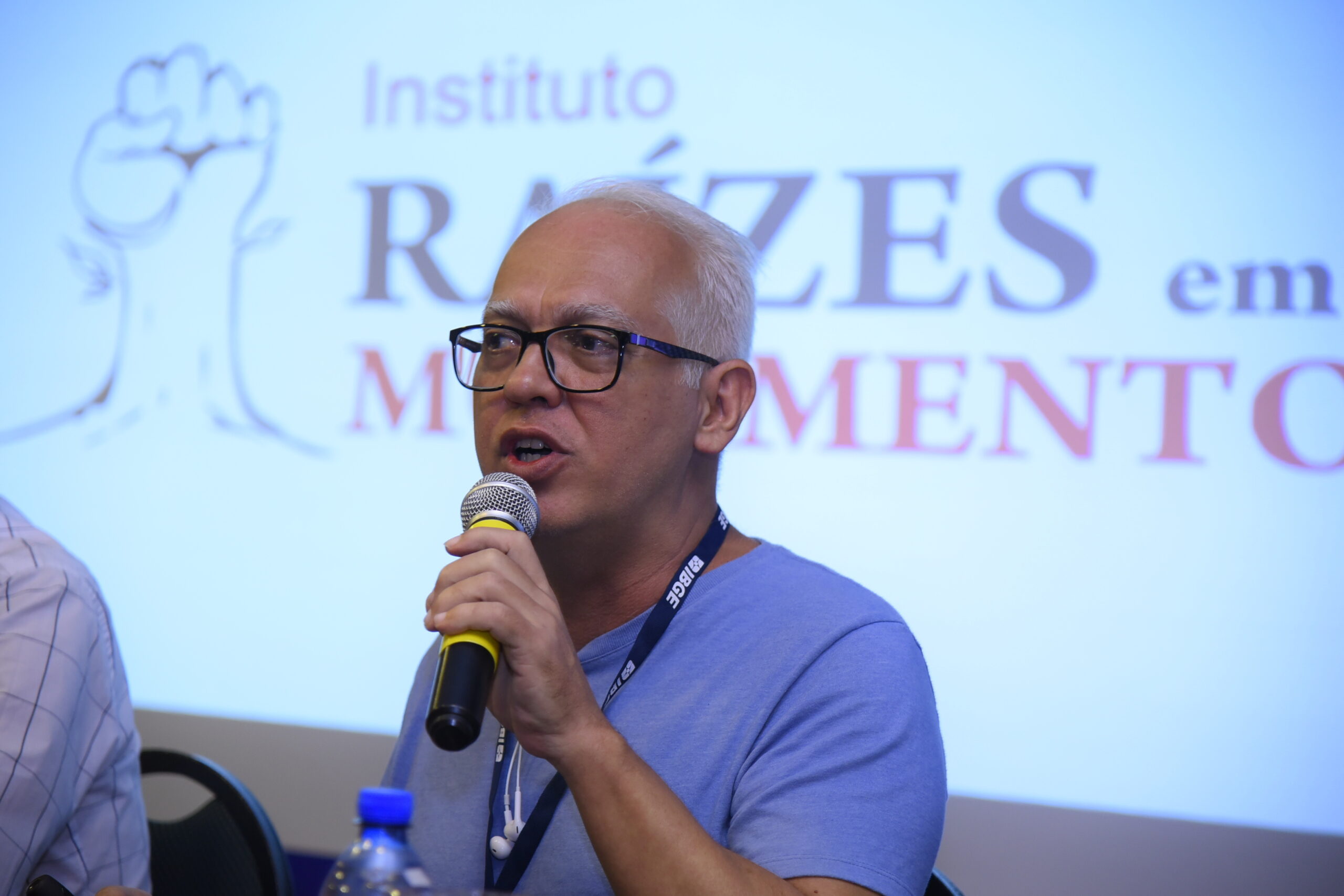
According to Alan Brum, coordinator at the Center for Research, Documentation, and Memories of Complexo do Alemão (CEPEDOCA), cofounder and director-president of the Roots in Movement Institute, and coordinator of the Complexo do Alemão Popular Action Plan, it is important to strategize. Building a network of organizations that have already produced data on favelas and mapping the total of their efforts is necessary. This approach allows IBGE to appropriate data provided by favelas and incorporate it into public research. Furthermore, the sociologist from Complexo do Alemão explains that people must be the core focus, not the mapping process itself.
“There is definitely underreporting in IBGE’s data about favelas and urban peripheries due to limited reach… we [need] to improve in the quality of what we are asked… incorporate [in census research questions] the quality of services in favelas… not just about access… I think that we have to move from ‘access to basic services’ to ‘utilization of basic services’… What often happens is that the data show, for example, a Family Clinic in the territory, making it seem like enough, statistically speaking. But, actually, the wait time is so long that many families leave the favela and travel to other clinics outside the neighborhood to be able to get service… The research has to center on people, not just geographic location.” — Alan Brum
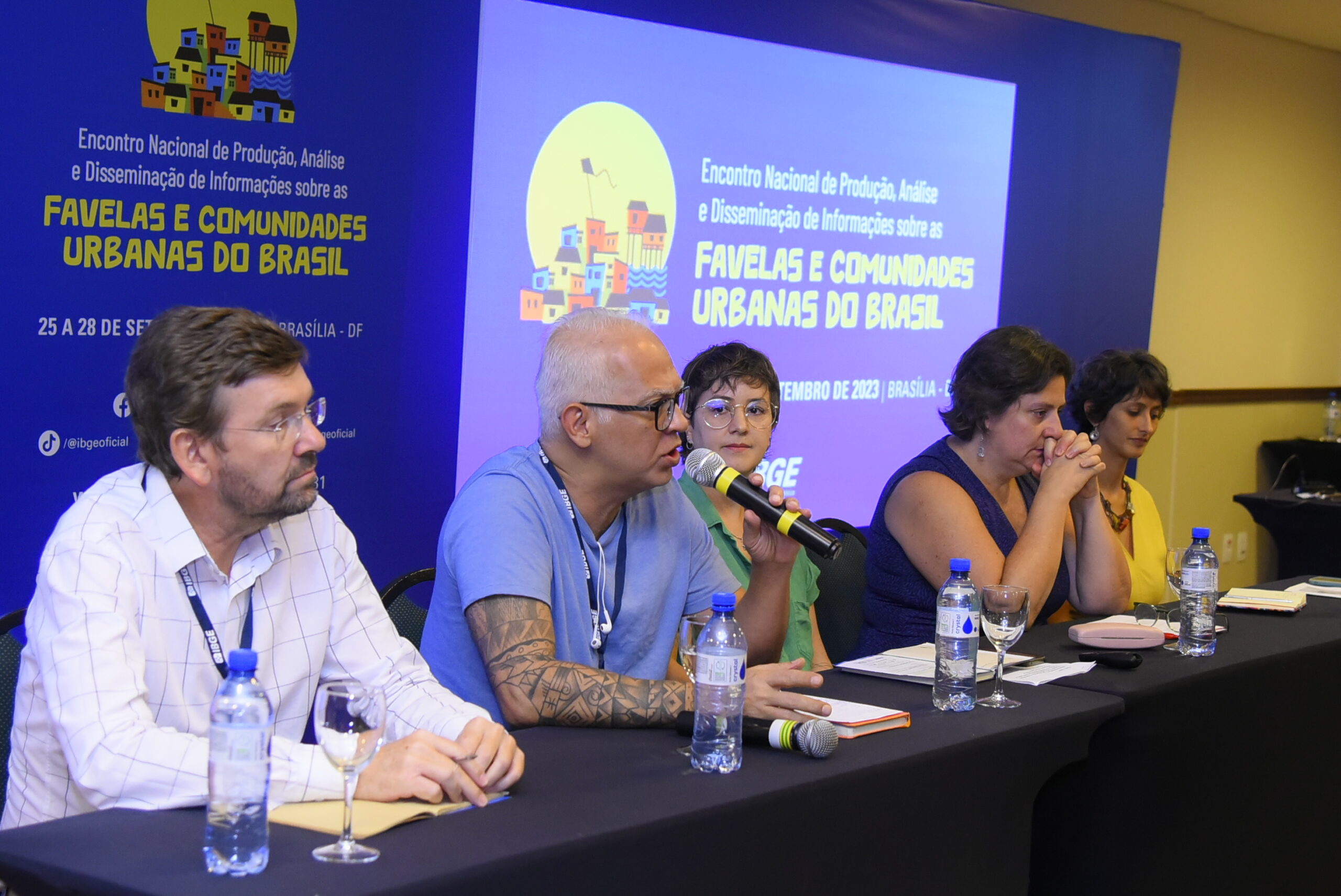
The Favela is the Center: Debates and Perspectives from the Favela Museum Seminar
Laís Borges and Renata Furtado, both from the Favela Museum in São Paulo, raise questions regarding the history and social dynamics of favelas, emphasizing their potential. According to them, the favela must occupy everything, from the IBGE to the mansions of central São Paulo.
“The Favela Museum is very new, and we are located in a mansion in the center of São Paulo. Many people ask: ‘why a mansion?’… and we think that favelas deserve such a palace and should occupy whatever they want… this clearly colonial space can become a place that brings together various favelas and peripheries.” — Renata Furtado
Choosing a New Official Nomenclature for Brazil’s Favelas and Urban Communities in IBGE Research
With the conclusion of all discussions, the results of the survey conducted online throughout the week were publicized, with 55 responses received. The preview included the most popular names and changes to definitions. At this stage, participants also analyzed and collaboratively edited the letter summarizing the consensus of the seminar.

IBGE employees began the presentation in two sections: (1) current versus proposed nomenclature, as per the form; (2) criteria adopted by IBGE for classifying favelas and similar areas.
The new name initially proposed by the advisory group was favelas and working-class settlements (in Portuguese: favelas e assentamentos populares). The degree of satisfaction with this option was 3.45, on average, on a scale from 1 to 5. The proposed conceptual changes were broken down into three parts:
- Definition of what constitutes a favela or analogous community;
- Introduction of a new section, seen as necessary by those present, that praises the favela as a collective, self-produced affirmation to the right to housing, which generates a sense of identity and belonging;
- Inclusion of the 24 main names by which favelas and related urban communities identify themselves, listed by the leaders present.
Currently, the definition is:
(1) A Subnormal Agglomeration is a form of irregular occupation of land on public or private property, owned by others, used for habitation in urban areas, generally characterized by an irregular pattern of urbanization, a lack of essential public services, and location in areas where access is restricted.
The proposed change establishes that:
(1) Favelas and Working-class settlements are urban territories that have emerged from the various strategies utilized by working-class communities to accommodate, typically through autonomous means, their housing needs and associated uses: commerce, services, leisure, among others, when faced with the insufficiency and inadequacy of public policies and private investments aimed at guaranteeing the right to the city.
The degree of satisfaction with this proposal from participants in the seminar was 4.13 on the scale from 1-5.
The participants also proposed a second section to complement the definition:
(2) In many cases, due to their shared origin in the struggle for housing rights and basic services, as well as their neighborhood relations, community engagement, and intense use of common spaces, Favelas and Working-class settlements create a sense of identity and community representation.
These additions garnered a satisfaction rating of 4.30.
Besides these two points, a third section recognizes the diversity of terms used to refer to favelas and urban communities throughout Brazil. Today, the official definition includes ten names:
(3) In Brazil, these irregular settlements are known by a wide range of names, such as: favelas, invasions, glens, lowlands, communities, villages, ressacas, irregular settlements, mocambos, stilt communities, among others.
The proposal is to further expand this definition, making it much more diverse, plural, and accurate:
(3) In Brazil, these spaces manifest themselves in different forms and names, such as: favelas, occupations, hoods, glens, lowlands, wetlands, villages, ressacas, mocambos, stilt communities, informal settlements, and improvised villages, among others, expressing regional, historical and cultural differences that have played into their creation. This diversity is an expression of diverse strategies, demands, and manners of accessing the city and its resources, as well as the practices, uses, and plural identities observed in every part of the country.
The degree of satisfaction with this passage was 4.40, receiving the highest evaluation from leaders of any portion of the proposals.
After presenting the changes, the discussion continued to cover how Favelas and Working-class Settlement areas can be identified from now on, in light of these updated understandings. The proposal, again, centered on community power over stereotypes:
“Favelas and Working-class settlements, or whatever else they may be called, express the social and spatial inequalities of Brazilian urbanization, and portray the precarity that arises from inadequate government policy, private investment, provision of public services, community infrastructure, and environmental protections in the areas where they are located, reproducing conditions of vulnerability. These factors are exacerbated by the lack of security of tenure, which compromises the right to housing and legal protection against forced eviction and removal.”
This revision was again well accepted, with an average satisfaction score of 3.96. During these discussions, several leaders specifically suggested including security of tenure as a factor in the passage.
Despite the newfound opportunity for dialogue with the IBGE, institute employees emphasized to the leaders on several occasions that the conclusions drawn from this event will undergo further discussion and may or may not be adopted. Many residents and peripheral researchers stressed the importance of identifying new forms of community representation and cooperation to capture information not yet accounted for by the IBGE in favelas and working-class settlements. They advocate for refining and tailoring approaches, languages, methodologies, data collection tools, and supervision of statistical and geospatial operations specific to these territories to enhance their effectiveness.
Furthermore, improving and expediting mapping projects in favelas and working-class settlements were cited as crucial, particularly as such spaces tend to be highly dynamic, growing rapidly and with new public passages emerging. This is important because many residents want to have addresses, yet their streets, alleys, and passages are currently absent from official maps.
Democratizing the census requires the full integration of favelas and working-class settlements at every stage of the statistical process—from design and collection to data analysis and dissemination. It is only through this inclusive, community-centric approach that we can elevate the census to its rightful level.
“There’s no sugar-coating it; we can’t romaticize the issue, particularly when it comes to public policy. There’s a verse by Brown that says: ‘even the IBGE came by and never came back. Tacked numbers on the shacks, asked a bunch of questions, then forgot about it.’ That means that the visit and the survey didn’t bring access to public policies… it’s crucial to think alongside these actors.” — Guilherme Simões
This is the final article in a series of three about how Brazil’s census bureau, IBGE, held an unprecedented week-long workshop to debate how to change the term “subnormal agglomeration” used for decades to describe the nation’s informal settlements, from the perspective of favelas and working-class communities.
About the author: Julio Santos Filho has a Bachelor’s in International Relations (UFF) and a Master’s in Sociology (IESP-UERJ). A Black man from Ilha do Governador, he has worked as editor of RioOnWatch since 2020. In 2021, he edited the series “Rooting Anti-Racism in the Favelas”, a silver medalist in The Anthem Awards.
